
 A recent report on the North America Decommissioning and Closure Service market by Verified Market Reports forecasts that the market will reach US$14.8bn by 2030, growing at a CAGR of 6.9% from 2024 to 2030.
A recent report on the North America Decommissioning and Closure Service market by Verified Market Reports forecasts that the market will reach US$14.8bn by 2030, growing at a CAGR of 6.9% from 2024 to 2030.
This is driven by factors such as ageing infrastructure, stricter environmental policies and the increasing cost-effectiveness of decommissioning technologies, with key advancements including improved safety standards, automation of certain decommissioning processes and enhanced waste management techniques.
Ageing infrastructure is a major driver with older plants requiring decommissioning and closure as they reach the end of their life cycle, to ensure compliance with safety and environmental standards, such as the BSEE regulation that stipulates that wells must be plugged and abandoned within three years of being deemed ineligible for further work, and platforms must be removed within five years of being no longer useful for operations.
Increasingly stringent environmental regulations and policies related to waste disposal, emissions control and site remediation are pushing companies to engage in responsible decommissioning practices and improve the environmental footprint of their operations, which is vital for safeguarding public health and the environment.
Trends such as the emphasis on environmental sustainability and the integration of circular economy practices also play a significant role in shaping the market’s future, with an increasing focus on repurposing and recycling decommissioned assets.
Technology plays a critical role in improving the efficiency, safety and environmental impact of decommissioning services. The integration of advanced technologies such as AI, drones, robotics and automation in the decommissioning process has significantly improved efficiency, reduced human exposure to hazardous environments, and lowered operational costs. Furthermore, advancements in data analytics and AI help companies manage decommissioning projects more effectively by predicting potential risks and improving decision-making.
Challenges highlighted by the report include ongoing supply chain disruptions, particularly in the materials needed for decommissioning projects, which can result in delays, necessitating the improving of supply chain management and diversification of sources of materials. Navigating complex regulatory environments can also delay projects, with increased collaboration between service providers and regulatory bodies needed to streamline approval processes. Pricing pressures are also a constraint, driving the leveraging of technology to reduce operational costs and improve overall efficiency.
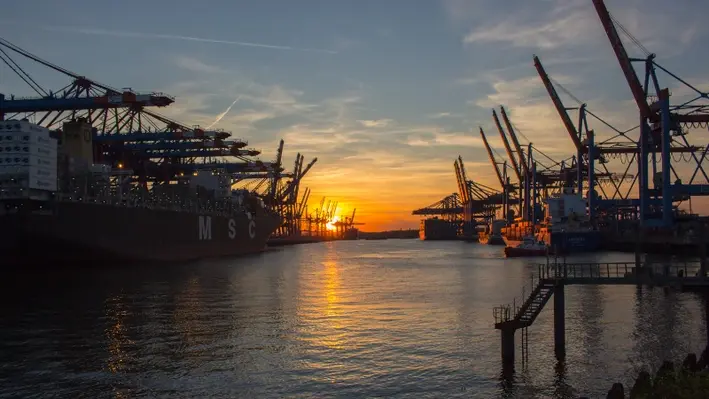

The global high pulsed power market for well intervention, valued at approximately US$267mn in 2023, is poised for remarkable growth, according to a market report by Transparency Market Research.
The organisation has indicated a compound annual growth rate (CAGR) of 23.2% from 2024 to 2034 for the sector.
By the end of 2034, the market is expected to reach an estimated US$3.5bn, according to industry analysts.
High pulsed power solutions have become indispensable in modern well intervention, offering efficient energy delivery to address blockages and enhance the productivity of aging oil wells.
As global energy demand rises and production rates from mature wells decline, the oil and gas industry is increasingly relying on these technologies to extend asset life and improve recovery rates.
Additionally, growing investments in onshore intervention activities are further propelling market expansion, as operators prioritise maximising output from existing assets over drilling new ones.
Well intervention encompasses a range of techniques—such as workover, slickline, wireline, and coiled tubing operations—aimed at maintaining and boosting the production of oil and gas wells. High pulsed power technology plays a critical role in these interventions by compressing and delivering energy pulses that effectively break up blockages and improve fluid flow. Typically, these systems power specialised equipment, such as diamond drilling bits, which help remove debris and optimise hydrocarbon flow.
1. Rising adoption of liquefied gases and renewable energy initiatives
As global energy demand escalates and mature wells struggle to maintain production, operators are increasingly turning to interventions to extract additional resources. High pulsed power solutions are proving essential for enhancing the efficiency of these operations, particularly in onshore fields where aging assets require innovative technologies to boost recovery.
2. Increased investment in onshore interventions
Developing countries, aiming to reduce their reliance on imported oil, are ramping up investments in onshore interventions. For instance, Petrobras recently tendered for 15 land rigs to perform intervention activities in mature fields. Such initiatives are driving market demand as operators seek to extend the life of existing wells and optimise asset performance.
3. Research and development of pulse modulators and advanced components
Ongoing research into standardised pulse modulators and the development of high-voltage interconnects—including cable assemblies and receptacles—is expanding the product portfolio of high pulsed power systems. These innovations are crucial for delivering reliable and energy-efficient solutions that meet the demanding requirements of well intervention operations.
In 2023, North America dominated the high pulsed power market for well intervention, driven by the adoption of efficient and cost-effective techniques for well maintenance. The region’s focus on optimising existing oil and gas assets—through advanced technologies such as wireline perforating and coiled tubing—has significantly bolstered market growth.
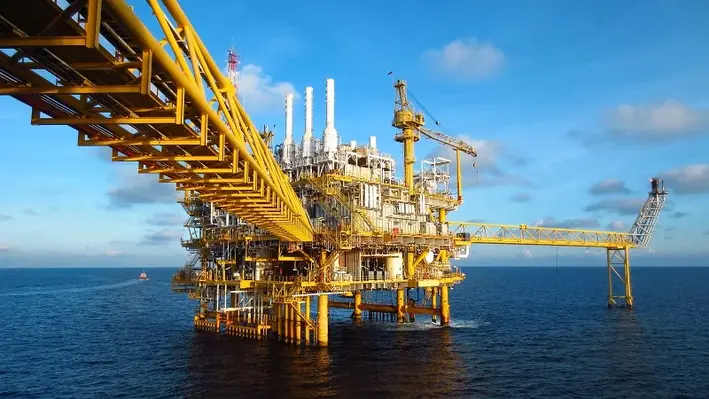

The states of Louisiana, Mississippi and Texas are suing against a new rule that tightens up the criteria for oil and gas companies to prove they can meet the financial obligations for decommissioning, according to a recent press article published by Public Radio wbhm.
Oil and gas companies with offshore infrastructure are obligated to decommission it when it is no longer useful, by plugging wells and removing platforms within set deadlines.
As of June 2023, more than 2,700 wells and 500 platforms were overdue for decommissioning in the Gulf of Mexico, according to the US Government Accountability Office. It states that the lack of effective enforcement by the Bureau of Safety and Environmental Enforcement (BSEE) has contributed to widespread decommissioning delays that have grown into a substantial backlog, and that the Bureau of Ocean Energy Management (BOEM) does not effectively assure that operators have the financial and technical capacity to meet decommissioning obligations in advance of potential delays, bankruptcies, or other defaults. Delays can increase environmental and safety risks, as well as potentially indicating that companies are in financial trouble and may leave the government to foot the bill for decommissioning.
A 20-year-old BOEM rule requires a company to provide financial assurance to prove it can clean up the infrastructure afterward before it can get a lease to drill. In April 2024, the BOEM passed a new rule, substantially strengthening the financial assurance requirements for the offshore oil and gas industry operating on the U.S. Outer Continental Shelf (OCS), to better protect the American taxpayer from bearing the cost of oil and gas facility decommissioning. It includes the requirement that companies which cannot provide adequate financial assurance have to put up a surety bond.
“The offshore oil and gas industry has evolved significantly over the last 20 years, and our financial assurance regulations need to keep pace,” said BOEM director Elizabeth Klein at the time of the issue of the updated rule. “Today’s action addresses the outdated and insufficient approach to supplemental bonding that does not always accurately capture the risks that industry may pose for the American taxpayer – like financial health of a company or the value of the assets that the lessee holds.”
The three states are suing against the new rule on the grounds it would be unaffordable for independent small and mid-sized oil companies, potentially causing bankruptcies and job losses. Meanwhile, environmental groups, the API and major oil companies (who might be better able to shoulder any additional costs), are supporting the new rule.
It is reported that the district judge for the Western District of Louisiana will decide whether or not to approve an injunction, which will pause the rule while arguments are heard. In the meantime, the rule remains in effect.
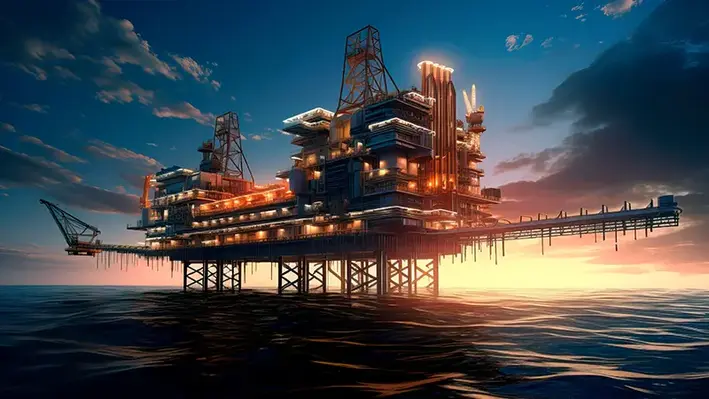

An analysis by Ocean Conservancy has shown that the number of offshore oil wells that are overdue and in need of decommissioning could likely double by 2030.
A report entitled 'Protecting the Ocean and Taxpayers by Strengthenening Standards for Offshore Oil and Gas Decommissioning,' that was released during the end of last year, provides a comprehensive outlook at the state of offshore oil and gas decommissioning in the Gulf of Mexico, the growing consequences of the failing regulatory system, and policy changes to address them.
As of 2023, the federal waters of the Gulf of Mexico contained roughly 2,700 wells and 500 platforms that were overdue for decommissioning and considered delinquent. This idle and deteriorating infrastructure in the ocean is a growing risk to the environment and wildlife, and a growing risk to taxpayers if the government is forced to use tax dollars to cover cleanup costs. Risks associated with delinquent oil wells include oil spills which not only pose a major risk to the environment and wildlife, but are also a growing risk to taxpayers if the government is forced to use tax dollars to cover cleanup costs.
An analysis by Ocean Conservancy found that if the challenges with decommissioning policy are not fixed and the backlog is not addressed, the number of overdue wells in need of decommissioning could nearly double by 2030, ballooning to more than 5,000 wells.
“Experts estimate the cost to decommission all Gulf of Mexico oil and gas infrastructure–including active and idle– could be anywhere from US$40mn to US$70bn. Meanwhile, the federal system that governs offshore decommissioning is plagued by widespread and substantial shortcomings,” said Andrew Hartsig, an expert on offshore oil and gas policy and senior director of Arctic Conservation at Ocean Conservancy. “We need to make changes before this already-failing system comes under more strain and leaves taxpayers footing the bill.”
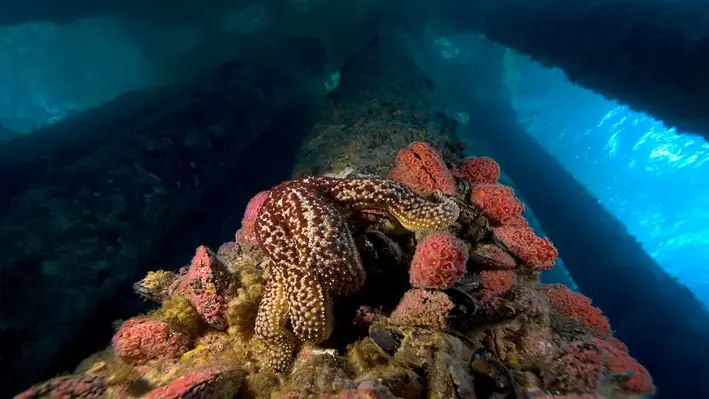
 A recent report by the Australian Academy of Technological Science and Engineering on offshore oil and gas decommissioning highlights technologies that can facilitate alternative uses for in situ decommissioned platforms.
A recent report by the Australian Academy of Technological Science and Engineering on offshore oil and gas decommissioning highlights technologies that can facilitate alternative uses for in situ decommissioned platforms.
As the report points out, in situ decommissioning and repurposing of infrastructure can preserve marine ecosystems, reduce decommissioning requirements, and mitigate the risks of transporting invasive species. Such alternative uses can include rigs-to-reefs, commercial fishing, tourism, maritime logistics, alternative energies, coastal surveillance and research. Some of these approaches are already being used or planned in the Gulf of America. However, it is important to ensure that legal and regulatory issues, as well as technical challenges such as preserving structural integrity, are adequately addressed to ensure the long-term viability of repurposed assets.
Infrastructure that is intended to be repurposed will need to be prepared accordingly, assuming all the regulatory approvals have been obtained, to include ensuring integrity of the structure, removing or containing any contaminants to ensure there are no leaks throughout the lifespan of the repurposed facility, and continuous monitoring to mitigate against any ongoing risks.
Measures can include geotextile wrapping to protect against corrosion and guard against potential contaminant release; and stabilisation and encapsulation of contaminants to ensure their long-term containment and prevent leakage.
As would have been the case with the original facility, ensuring integrity of the repurposed structure for its proposed lifespan will be crucial. Approaches can include reinforcing infrastructure such as concrete and steel to boost structural integrity and extend lifespan, particularly where re-use purposes require topside refurbishing with heavy equipment; advanced anti-corrosion coatings and treatments; and capping and plugging for long-term well integrity.
Continuous monitoring of the infrastructure itself as well as the sea and ecosystem surrounding it is crucial to preserve the local marine environment. Here, autonomous systems and sensor technologies capable of providing real-time data to facilitate prompt remediation when necessary can come into play. Miniaturised sensors using nanotechnology dispersed throughout the marine environment can collect data on various parameters such as water quality, pollutants, and biological indicators. Genetically engineered microorganisms or synthetic biological systems could be designed to detect specific pollutants or environmental changes in real-time.
Advanced machine learning algorithms could be integrated into monitoring systems to analyse vast amounts of data and identify anomalies that could indicate environmental disturbances or hazards. These algorithms would continuously learn from historical data and real-time observations to improve their accuracy in detecting abnormal conditions and trigger alerts.

 DOF Group ASA has announced two more contracts for subsea projects for two international companies in the Gulf of Mexico.
DOF Group ASA has announced two more contracts for subsea projects for two international companies in the Gulf of Mexico.
Skandi Implementer, which has recently departed Mexico due to a contract termination, will be deployed for the projects. Overall the projects’ expected duration is approximately two months.
The vessel will complete the integration of survey services and two of DOF’s remotely operated vehicles (ROVs).
Mons Aase, CEO of DOF Group ASA, said, “We are pleased to be able to quickly secure work for Skandi Implementer following the recent contract termination. Beyond contributing with asset utilisation and backlog, these contract awards represent advancing another of our I-class vessels into our subsea project business in line with our plan to add subsea service scopes to our most recent additions to the fleet.”
The Skandi Implementer was designed for subsea construction, inspection, repair and maintenance (IRM) and ROV services up to 3,000m of depth.
Earlier this month DOF Group also announced the acquisition of two subsea contracts in the APAC region for work offshore Malaysia and Indonesia.

 A United States-based oilfield technology company called Deep Well Services stepped into the United Arab Emirates with its acquisition by Enersol, a joint venture comprising ADNOC Drilling Company and Alpha Dhabi Holding.
A United States-based oilfield technology company called Deep Well Services stepped into the United Arab Emirates with its acquisition by Enersol, a joint venture comprising ADNOC Drilling Company and Alpha Dhabi Holding.
DWS, through Enersol, will drive the development of the UAE’s conventional and unconventional energy resources. Its contribution, alongside other Enersol companies, will add the technological support necessary to deliver ADNOC Drilling’s US$1.7bn worth of contract that involves leveraging 144 unconventional wells.
Established in 2008, DWS is known for its advanced technology services within the energy sector. Its patented Hydraulic Completion Units (HCU) are designed for high-pressure, long lateral, and multi-well completion operations, enabled by its data analytics software, BoreSite. The HCUs are also known for tackling workover of laterals, multi-well pads, high-pressure operations, and complex fishing programmes.
The company's other patented offering is the data acquisition system (DAS), BoreSite, which can allow operators to attain production optimisation by leveraging vast data sets into actionable insights for them. Its live feed reflects operations condition in real-time, which can be monitored and gauged remotely to make prompt corrections if required.
DWS' blowout preventers that are manufactured in the US with an API 16A & 6A certification are available in 10k and 15k pressure ratings. These, along with its range of accumulators, assures reliable well control and traceability for wellbore intervention activities.
The blowout preventers feature:
The company's pressure management services offer a compact and mobile 5000 psi hot tap drill to release trapped pressure by exercising caution and following all safety protocols. It is equipped with the necessary tools from casing valves to drill pipes for operators to get their production back online.
The company also covers training and development, offering globally accredited programmes with a special focus on operational safety and efficiency. It also assists in automating flowback operations via a joint venture called AutoSep Technologies. Besides its vast experience across multiple basins in North America, DWS has served more than 70 E&P companies that include both small-private operators and large-cap national energy companies.
Enersol has acquired a 95% stake in DWS at approximately US$223mn, including performance-based payments, subject to necessary regulatory approvals and other customary conditions precedent. The joint venture reflects ADNOC Group's readiness to adopt advanced oilfield technologies to maintain the Middle East's relevance in today's oil and gas industry. DWS has been the venture's fourth acquisition in 2024, following agreements to take over a downhole visual analytics company called EV; acquire 51% interests in NTS Amega, a manufacturer of advanced precision equipment and solutions provider for the energy sector, and a 67% stake in US-based Gordon Technologies that offer measurement while drilling services.
These acquisition strategies aim to build a next-generation technology portfolio with the scope to expand its presence in a previously untapped yet dynamic market.
To know more about the global well intervention scene click here.

 The UK’s North Sea Transitions Authority (NSTA) has highlighted the role of new technologies in making P&A operations more efficient and cost-effective, and the potential of the UKCS as a test bed for pioneering P&A technologies which could be rolled out in other basins, such as the Gulf of America.
The UK’s North Sea Transitions Authority (NSTA) has highlighted the role of new technologies in making P&A operations more efficient and cost-effective, and the potential of the UKCS as a test bed for pioneering P&A technologies which could be rolled out in other basins, such as the Gulf of America.
Nowhere is the need for new technologies to improve operations more acute than the Gulf of America, given that around 2,300 non-producing wells are scheduled for plugging and abandonment by this year, with decommissioning costs forecast at between US$40-US$50bn and environmental compliance expenses continuing to grow.
In the NSTA Technology Survey and Insights 2024, which raises awareness of solutions and approaches operators are using in the UKCS, the NSTA highlights that Well P&A, the most expensive part of the decommissioning process, is a field of active innovation, driven by both vendors and operators and including through-tubing logging, barrier placement, and downhole wireless sensing.
It highlights that there has been progress in introducing novel barrier materials and deployment techniques, and tools for removing control lines from downhole gauges. It notes that modular workover rigs for platforms and light well intervention vessels for subsea abandonments can lower P&A costs when compared to the use of standard rigs.
In the area of well inspection and cement condition, there are several emerging technologies including multi string logging for barrier verification and assessing cement quality behind the production casing.
There are several examples of conductor cutting techniques reported in the survey, with one operator confirming deployment of a combined hydraulic cutting tool with a pinning tool to allow combined cutting and pinning operations.
In the area of barrier placement and verification, operators are using deployable technologies such as through tubing abandonment, ongoing field trialling of non-alloy barriers, fusion-based alloy plugs, and suspended well abandonment tools for rigless abandonment using lower cost vessels. One operator plans to use self-healing cement to incorporate downhole gauge cables which prevent effective plug setting. Emerging technology is being progressed through trials of novel abandonment techniques.
Operators are considering light well intervention vessels for subsea open-water abandonments and subsea shut-off devices for open-water tubing retrieval. Emerging technology includes novel approaches for breaking the cement bonds on casing strings, with the swarf recovery unit and a casing recovery system being new developments.
The survey also highlights the use of innovative solutions for improving well access for interventions, low-cost platform workover rigs/modular drilling rig systems, rigs specifically configured for well P&A, and riserless P&A systems. The latest innovations include an inside casing status visualisation technology, subsea vessel based fishing tools and a casing expander tool.
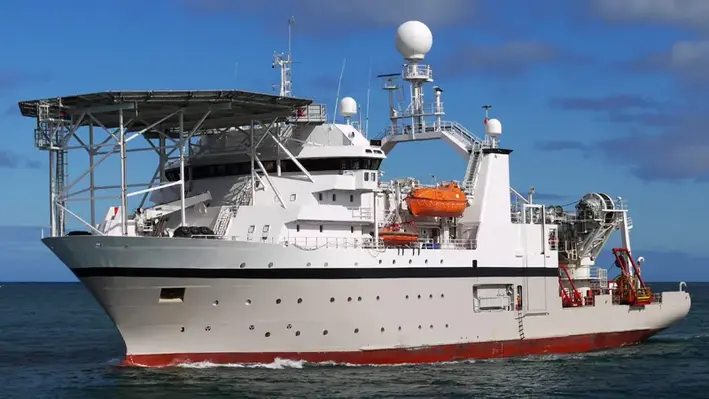
 To secure dedicated operations that include routine subsea well interventions or abandonments in the United States Gulf of Mexico over the next five years, a deepwater consortium from the region, HWCG LLC, has entered an agreement with Trendsetter Engineering to upgrade an existing 6-3/8 inch, 15k Trident Open Water Intervention Riser System (OWIRS).
To secure dedicated operations that include routine subsea well interventions or abandonments in the United States Gulf of Mexico over the next five years, a deepwater consortium from the region, HWCG LLC, has entered an agreement with Trendsetter Engineering to upgrade an existing 6-3/8 inch, 15k Trident Open Water Intervention Riser System (OWIRS).
Once upgraded, possibly by the first half of the year, the system will become well equipped for operations in water depths up to 10,000 ft, improving barrier functionality, leaving MUX controls redundant. It will also convert the Trident LRP into a compact, lightweight 15k capping stack.
Previously, HWCG posessed a 20k valve-based capping stack for addressing blowout incidents. It was supported by a 7-inch gate valve designed, qualified and manufactured by Advanced Technology Valve. It came with a rating of 20,000-psi and 350°F. It helped address challenging technical issues within the deepwater environment by improving a well area that was open to flow and also enhanced riser load capability. According to Craig T Castille, the Managing Director of HWCG, the development helped 'improve our full cycle response mission', as part of the consortium's commitment to 'providing a Rapid Response Solution for well containment which minimises potentially severe environmental and economic impacts to the Gulf of Mexico and its stake holders'.
The HWCG came into existence following the unfortunate incident of Deepwater Horizon, bringing together the offshore industry for the greater cause of setting up a prompt and comprehensive response team to address subsea blowout before it leaves an irreplaceable damage to people, property and environment. It's multiple initiatives include a robust Mutual Aid programme, strategic partnerships with vendors and industry experts such as Helix Energy Solutions Group and Trendsetter, to name a few, and conducting crisis exercises and thoughtfully curated drills.
“Our approach to deepwater well containment has always centered on consulting with the industry’s foremost experts while leveraging the best available technology. Our annual drill showcases the vast level of collaboration inherent in our response efforts, which becomes even more critical at full scale,” said former Managing Director of the consortium, David Coatney.
The consortium considers the upgraded system by Trendsetter state-of-the-art, which can also be deployed in the event of a subsea blowout, ruling out the necessity of several critical response modes such as well capping, flowback, well kill, and well intervention. It is known for its cost reduction and efficient well intervention capabilities.
HWCG's Technical Director, Mitch Guinn, and Project Manager, Erik Bristol, has worked alongside Trendsetter to tailor the upgraded system for routine operations and source control response, ensuring seamless integration with the venture's existing capping stacks. “HWCG is committed to providing its members with access to superb technology from extremely capable service providers. The Trident OWIRS system and our agreement with Trendsetter are emblematic of HWCG’s strategy to utilise equipment which is routinely operated in the US GoM. This strategy reduces operational risks during a response by improving worker confidence through repetition,” said Castille.
To know more about the global well intervention scene, click here.
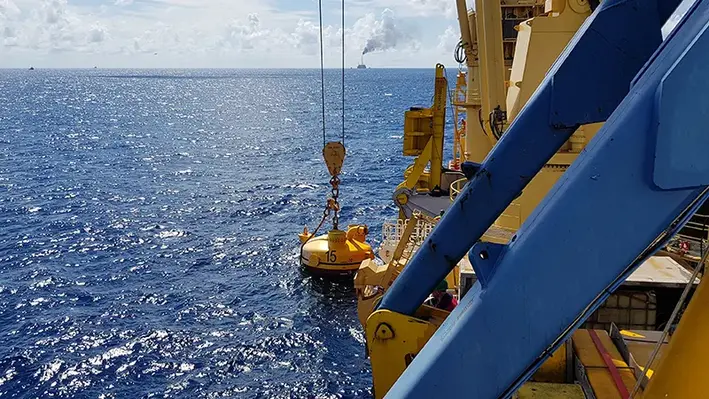
 To tackle field development work in the US Gulf of Mexico, bp has onboarded C-Innovation (C-I) to deliver a significant contract that also covers inspection, maintenance, and repair (IMR) services.
To tackle field development work in the US Gulf of Mexico, bp has onboarded C-Innovation (C-I) to deliver a significant contract that also covers inspection, maintenance, and repair (IMR) services.
The contract gives bp access to C-I's vast fleet of specialised subsea and supply vessels, besides the provision of its special light construction vessels, C-Constructor and MV Holiday. Each of these vessels come equipped with 150 MT subsea cranes and two Schilling UHD work class remotely operated vehicles (ROVs).
These two dedicated IMR construction vessels will be deployed for project management, engineering, equipment, logistics, and port services, alongside aiding construction, inspection, survey and decommissioning projects. “C-I will act as the contracting lead from front end engineering to offshore execution," said Ryan Combs, C-I’s bp Programme Manager.
The company is proud of its offshore service packages that are customised to suit individual client needs. Delighted on acquiring this three-year contract that has an additional two one-year extensions scopes as well, Combs said, "This multi-year contract in the Gulf of Mexico secures the C-Constructor and Holiday to support a diverse array of subsea activities ... A crucial factor in winning this award is C-I’s access and integration of the unmatched resources available within the Edison Chouest Offshore (ECO) family of companies. This new award is the continuation of a well-established relationship with bp and demonstrates our ability to deliver on our commitments and continuously improve our services year after year.”
C-I has been present in the US Gulf of Mexico since 2017, where its vessels have completed more than 60 riserless light well intervention (RLWI) projects in the Gulf of Mexico, especially in the deepwaters.
"One thing that sets us aside I believe is our ability to control our own destiny and to take on the contract as a whole," said the company's Vice President, David Sheetz.
C-I's turnkey RLWI services are diverse enough for the most part of the well intervention system, including provision of the vessel, ROVs, subsea intervention system, pumping system, coiled tubing, nitrogen and stimulation fluids. The company is also known to have remediated multiple hydrates in the Gulf of Mexico.
The bp-operated Mad Dog field, which is known for its exceptional production count, had also seen the deployment of C-I's IMR ROV vessel, MV Dove, which helped mitigate several risks involved in the project. Some of these included armoring with Lexan polycarbonate, designing of new manipulator mounting subframes so that the reach of the manipulators can be extended by 12 inches, and the installation of enhanced manipulator control systems.
"C-I was engaged by bp early in the project lifecycle to provide input into the design of the subsea hardware and installation capabilities of the ROV, which would face limited access to the installation location beneath the facility. The C-I project team engaged with the ROV operations groups, offshore managers and tooling group in order to evaluate the risks involved with the execution of the project and ultimately secured a successful outcome,” said Combs.
To know more about the global well intervention scene, click here.
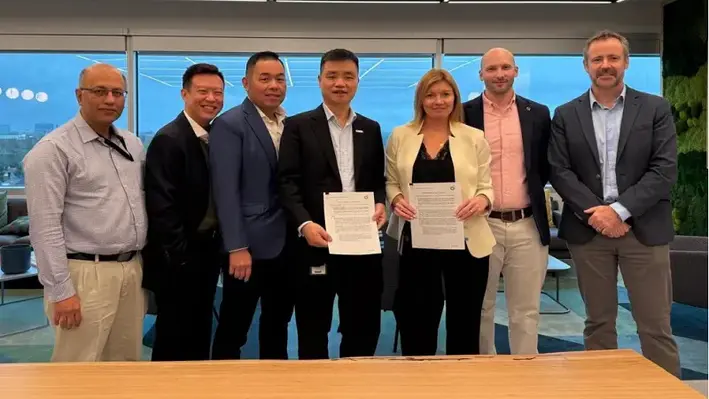
 Seatrium Ltd. has announced the signing of a MoU with BP Exploration & Production (bp) in preparation for the Tiber Floating Production Unit (FPU) in the US Gulf of Mexico.
Seatrium Ltd. has announced the signing of a MoU with BP Exploration & Production (bp) in preparation for the Tiber Floating Production Unit (FPU) in the US Gulf of Mexico.
Marking the second project for the companies, Seatrium will provide services to carry out the engineering, procurement, construction and commissioning (EPCC) of a FPU designed to support the development of bp’s deepwater assets in the Gulf. The Tiber FPU will be equipped with advanced technologies to enhance operational efficiency and safety.
The Tiber discovery is located approximately 300 miles southwest of New Orleans in the Keathley Canyon.
Seatrium and bp will jointly define the initial works and EPPC scope under the MoU. The contract is subject to the final investment decision by bp which is anticipated for later in the year. The new agreement builds on the existing partnership between the two companies on the Kaskida FPU, which reached final investment decision in 2024.
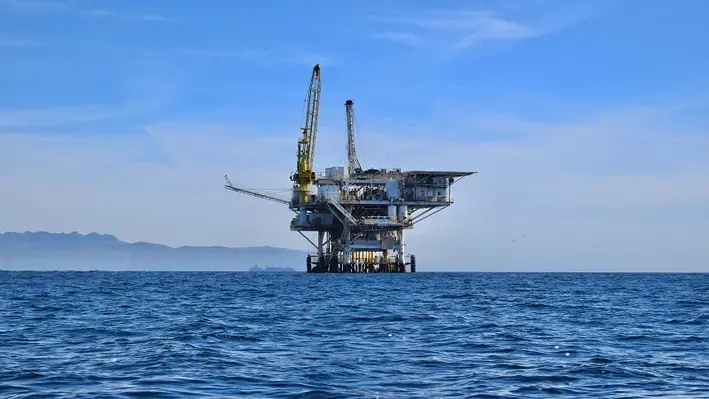
 Reservoir Group, a provider of innovative well intervention services, has successfully deployed its tubing cutting tooling in a variety of sizes and applications for both onshore and offshore environments.
Reservoir Group, a provider of innovative well intervention services, has successfully deployed its tubing cutting tooling in a variety of sizes and applications for both onshore and offshore environments.
This service, which supports a range of vertical and high deviation wells, is designed to reduce operational costs and bring production back online quickly. The cutting-edge technology, including hydraulic anchor tools, is deployed through coiled tubing, rig drill pipe, and snubbing unit drill pipe.
The diverse range of deployment methods allows Reservoir Group to efficiently service wells in various conditions. In a recent case history involving 11 wells, the company achieved a 100% success rate in tubing cutting operations.
A spokesperson from reservoir Group said, “Our team of technical experts combined with our proprietary products and commitment to customer care have been pivotal in delivering safe, high-quality, and cost-effective solutions.”
Page 7 of 22
Copyright © 2025 Offshore Network